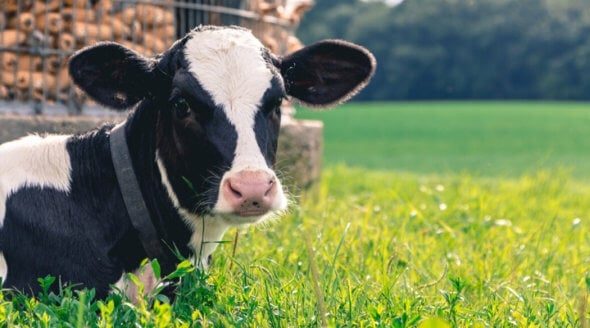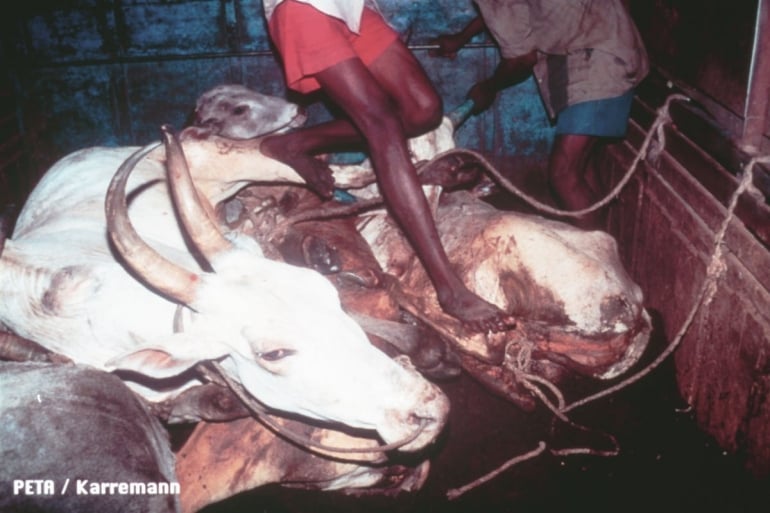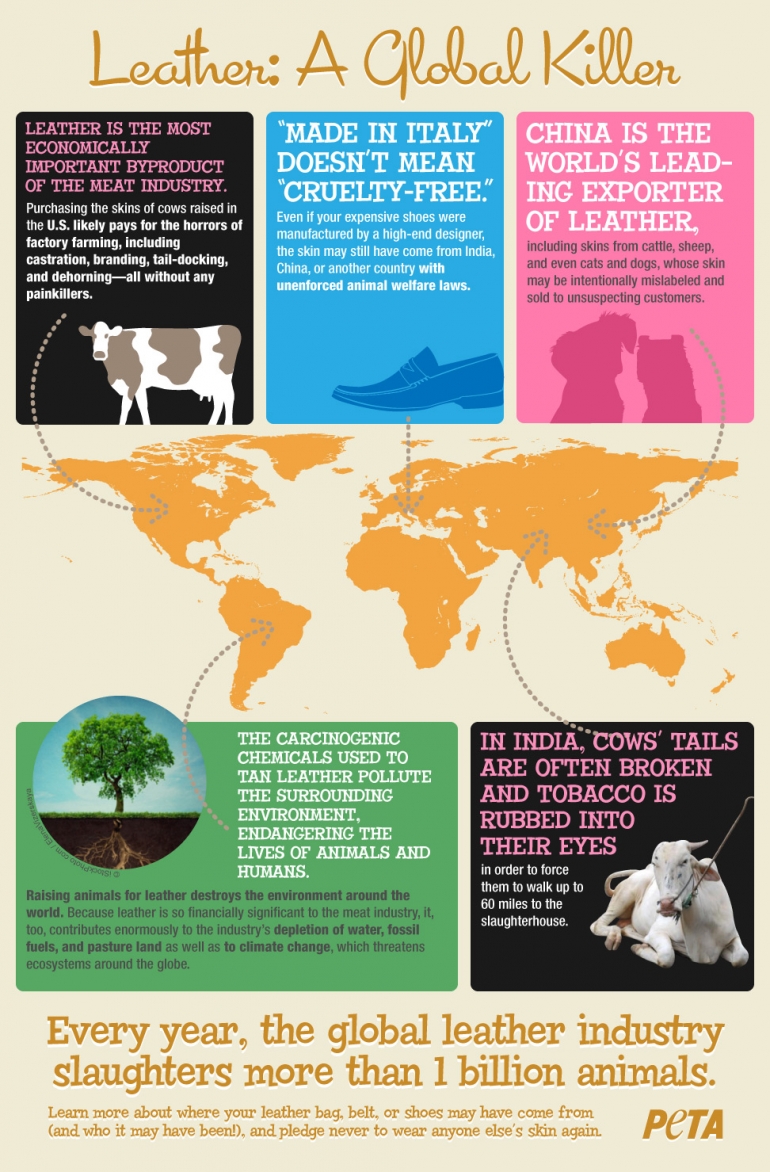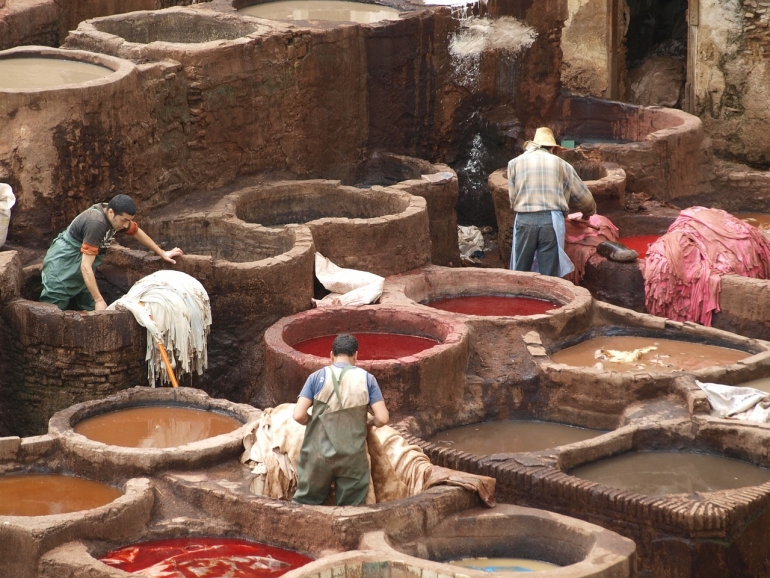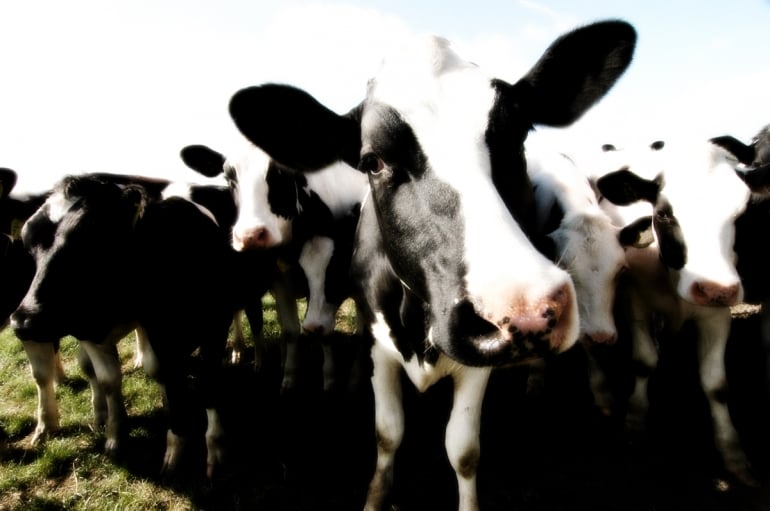The Leather Industry
While most people wouldn’t dream of wearing real fur, leather also comes from animals who were cruelly killed for their skins. Before being turned into belts and bags, many animals endure all the horrors of factory farming – including intensive confinement inside filthy cages or pens, castration without pain relief, chronic infections and disease caused by extreme crowding and a terrifying trip to the abattoir.
More than 1 billion animals are killed worldwide for the leather trade every single year, from cows and calves to horses, lambs, goats and pigs – and even dogs and cats. When you wear leather, there’s no easy way to know for sure whose skin you’re in.
A Global Killer
Investigations into the leather industries in China and India – two of the top three leather-producing nations in the world – have revealed horrific abuse. The vast majority of the world’s leather comes from China, where, despite years of campaigning by animal-protection groups, there are still no penalties for abusing animals in the skins industries. In addition to the cows, sheep and other animals killed for China’s leather trade, an estimated 2 million cats and dogs are also killed there each year for their skins.
Dogs Skinned Alive
A PETA Asia eyewitness investigation exposed what happens inside dog slaughterhouses in Eastern China. Footage obtained by the investigator shows one terrified dog after another grabbed roughly around the neck with metal pincers and then clubbed over the head with a wooden pole. Some dogs fall unconscious, while others cry out and writhe in agony with severe head trauma. Some struggle to breathe after their throats are cut. Finally, the skin is torn right off their bodies. PETA Asia’s investigator even saw workers tear the skin off dogs who were still alive.
Dogs who are next in line for slaughter can smell, hear and see what is happening to those in front of them. Many are so terrified that they climb on top of each other in the holding area, desperately trying to find a way to escape.
A worker at the slaughterhouse told PETA Asia’s investigator that this one facility kills up to 200 dogs every single day. When the video was shot, there were about 300 live dogs in the compound slated for slaughter. PETA Asia’s investigator documented that dog skin was turned into women’s dress gloves, men’s work gloves, shoes, belts, jacket collar trim and other products that are exported all over the world. No company is going to advertise that its gloves or belts are made of dog skin. An owner of one processing plant told PETA Asia’s investigator that the facility markets its products as lambskin . If you buy leather, short of doing a DNA test, there’s almost no way to tell what – or rather whom – you are wearing.
‘Sacred Cows’ Slaughtered in India
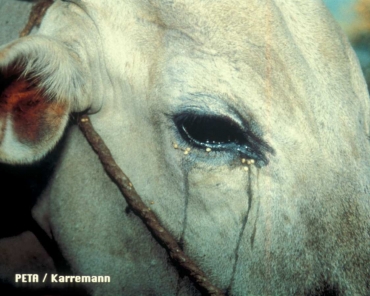
Many cows are beaten mercilessly during “death marches” covering hundreds of kilometres. When animals collapse from hunger, exhaustion, injury and despair, handlers force them to their feet by breaking their tails at each joint or rubbing tobacco, chillies or salt into their eyes.
Once at the abattoir, workers tie their feet together and throw them down in the filth and blood. Their eyes bulge with fear as they see their companions slaughtered with dull knives right in front of them. Sometimes cows’ legs are hacked off while they’re still conscious, and some endure the agony of being skinned alive.
Cruelty Closer to Home
Because skin is the most economically important co-product of the meat industry, buying leather directly contributes to factory farms and abattoirs – and all the cruelty involved. Animals raised on filthy, crowded factory farms are often caged and deprived of all that is natural and important to them, such as foraging for food and raising their young. Many are subjected to horrific mutilations, including having their teeth, tails and testicles cut off without any painkillers. Female animals are repeatedly impregnated by artificial insemination, and their terrified babies are torn away from them shortly after birth. At the abattoir, many cows, pigs, chickens and sheep have their throats cut while they’re still conscious and able to feel pain.
Tannery Toxins
Like fur, leather is loaded with toxic chemicals to keep it from decomposing in the buyer’s closet. Mineral salts, formaldehyde, coal-tar derivatives, cyanide-based dyes and other dangerous substances are routinely used during the tanning process. Wastewater and solid wastes (such as hides and skins) from tanneries are often simply dumped into rivers or onto riverbanks or nearby fields, leading to water and soil pollution. The Blacksmith Institute, a not-for-profit group that works to reduce pollution in developing nations, included tanneries on its 2012 list of the world’s top 10 toxic industries.
Because leather production is so unsafe, the process is being abandoned in most European countries and in the United States, and operations are moving overseas – jeopardising the health of people in other parts of the world so that people in the West can continue wearing leather gloves and shoes.
PETA Germany investigated the growing leather trade in Dhaka, Bangladesh. They visited the poor residential district of Hazaribagh in Dhaka, where 15,000 labourers – some as young as 10 – toil in more than 200 tanneries. Workers stand barefoot in toxic chromium effluent and handle acids and bleaches that can cause chronic skin diseases and even cancer. Even if workers are given cheap rubber boots to wear, they often are not equipped with face masks or safety goggles to protect against the fumes that can cause severe respiratory problems. Some workers lose fingers to the conveyor belts. A full 90 per cent of tannery workers there die before the age of 50.
Studies in Kanpur, India, have shown that tannery workers there also face a high death rate, mostly from respiratory diseases resulting from chromium exposure. Chromium, one of the most widely used – and dangerous – chemicals in the tanning process, produces the toxic chemical by-product hexavalent chromium, which is a known human carcinogen. Several studies have established links between sinus and lung cancers and the chromium used in tanning. Studies of leather-tannery workers in Sweden and Italy, for example, found cancer risks “between 20% and 50% above [those] expected”.
The Hidden Lives of Cows
Cows are individuals with distinct personalities. Some are bold and adventurous; others are shy and timid. They’re intelligent, curious animals who form social hierarchies, can recognise more than 100 members of their herd, have best friends and cliques and even hold grudges against other cows who have treated them badly.
These gentle giants mourn when a loved one dies or when they are separated from one another, and they shed tears over their losses. The mother-calf bond is particularly strong, and there are countless reports of mother cows who frantically call and search for their babies after the calves have been taken away from them and sold to veal or beef farms.
What You Can Do
Always choose animal-friendly fashions. From Beyond Skin to Stella McCartney, a growing number of top designers, high-street stores and online retailers now offer their customers shoes, jackets, handbags, wallets, iPhone covers and more made from vegan leather, micro-suede and other high-quality materials that don’t harm animals or the planet. When in doubt, look for the “PETA-Approved Vegan” label.

